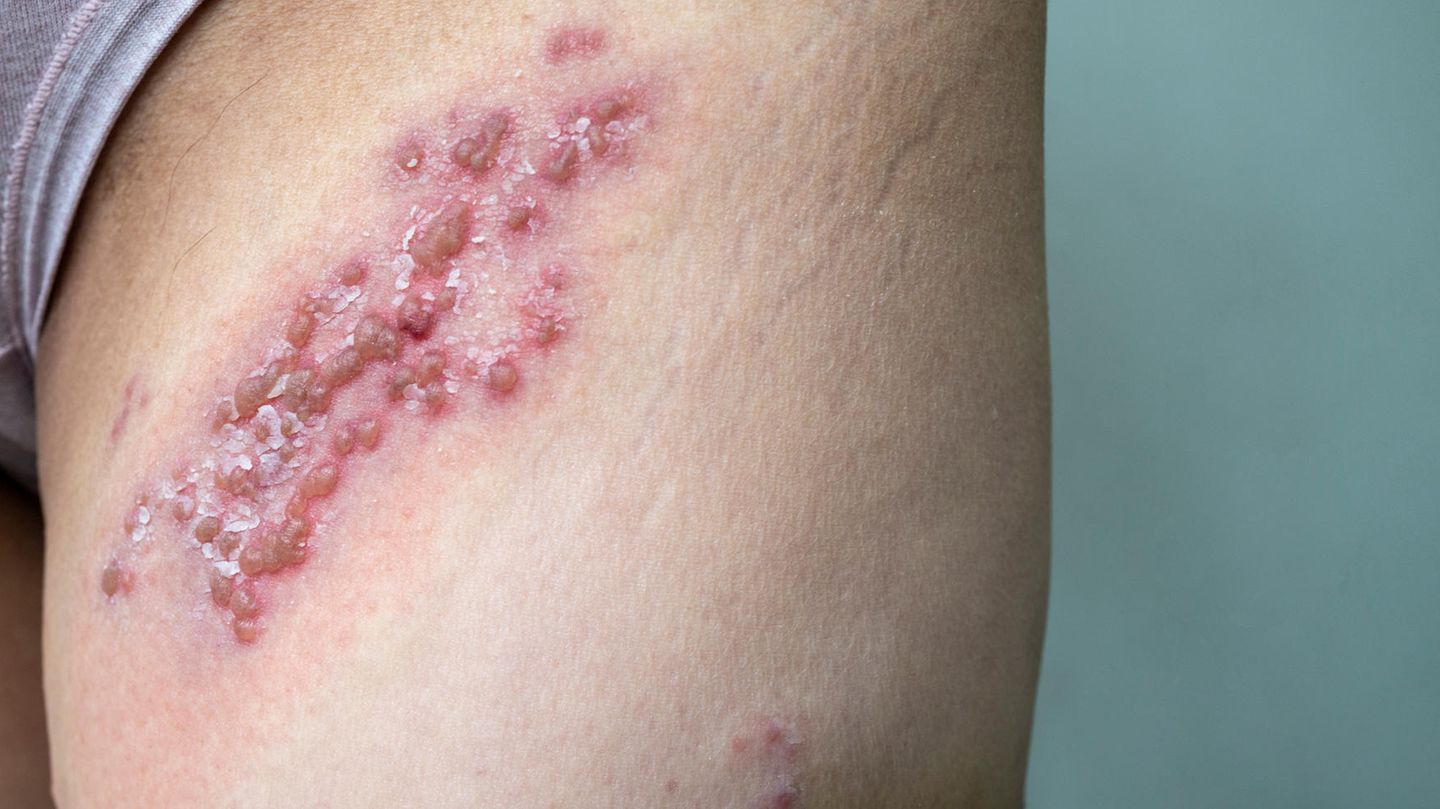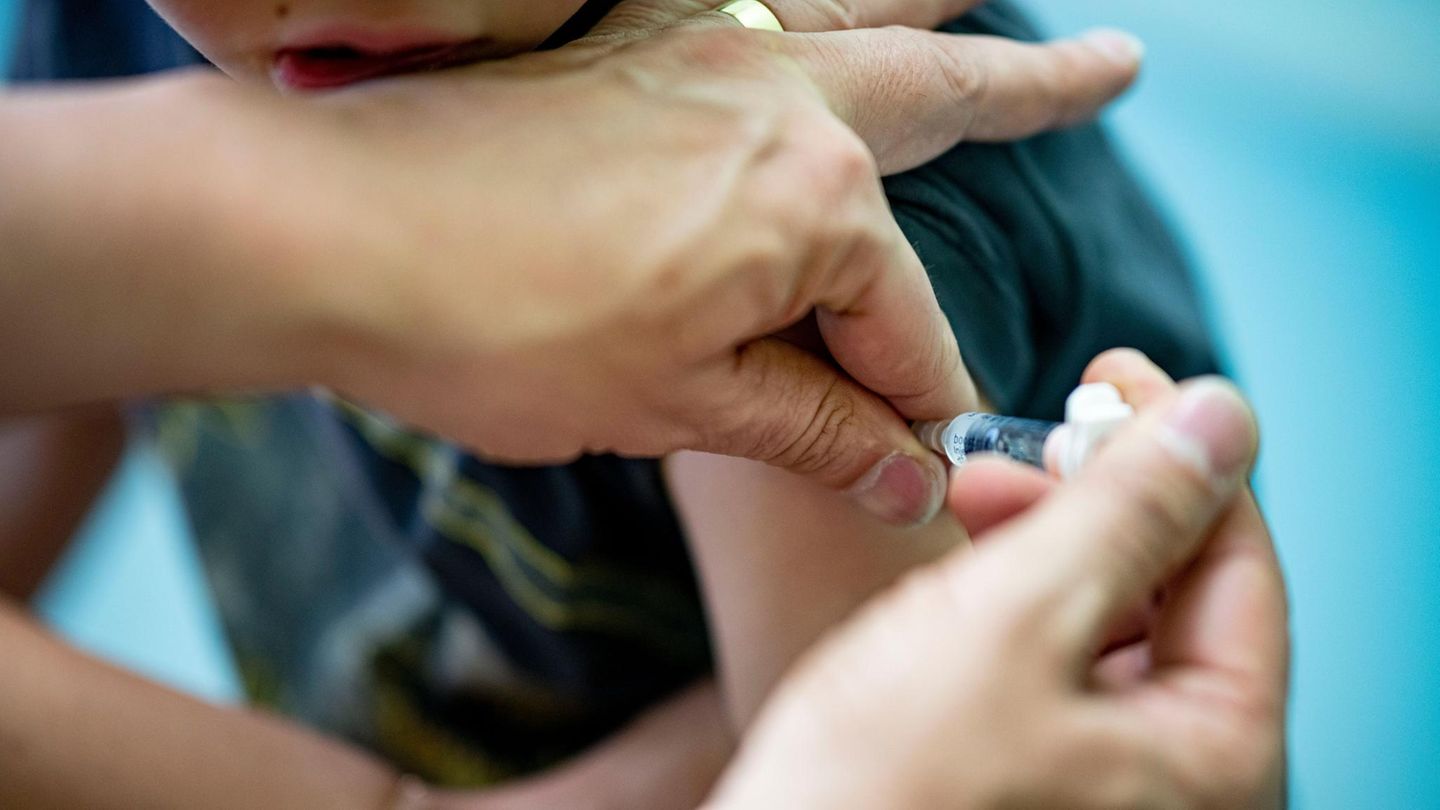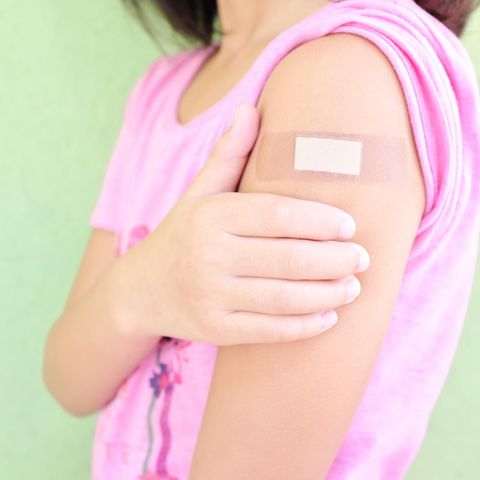Protection against diseases
WHO and Unicef warn: skepticism of vaccinations endangers children worldwide
Copy the current link
Add to the memorial list
The number of vaccinations increases only slowly worldwide. In some countries, the World Health Organization WHO even sees dangerous trends.
In the opinion of the World Health Organization WHO, vaccination campaigns for vaccination campaigns are a great danger to the health of the world population.
“We are extremely concerned about incorrect and disinformation about vaccinations,” says Kate O’Brien, director of the WHO vaccination department. The shrinking auxiliary funds are also “extremely problematic,” said O’Brien when submitting the annual report on the vaccination rates worldwide by the WHO and the UN Children’s Aid Unicef.
The much greatest obstacle to comprehensive vaccination protection in children is conflicts and the difficulty of achieving children in very remote regions. Last year 14.3 million children had not received a single vaccination in the first year of life, the report says. The year before, there were 14.4 million.
As early as the last year, funds were missing to support poor countries with vaccination campaigns. The partly drastic cuts of development aid this year – through the United States and many other countries – are likely to have devastating effects, fear who and Unicef fear.
WHO and UNICEF: Vaccination skepticism puts children in danger
Experts do not want to go into attitudes to the US Health Minister Robert Kennedy, who was considered a vaccine skeptic. However, they refer to the important role of politicians as well as religious or other guiding characters in order not to strengthen trust in the vaccines that have been monitored and tested for decades.
“In a good 50 years, 150 million lives have been saved by vaccines,” says Ephrem Lemango from Unicef. He called on all the ministers to make it clear that “killer diseases” and measles can be prevented by vaccinations.
Diseases that you don’t have to have

Belt rose
You feel struck, a dull pain answers on the left in your chest, it radiates slowly and threatens to smash it. A few days later, red spots bloom on her chest, which group into a ribbon or belt. At the latest now it is clear: you have a shingle rose, also called herpes zoster. The Varicella Zoster virus (VZV) is to blame for this painful illness. If you put the first one, get chickenpox. This usually happens in childhood. After that, they are protected from chickenpox for a lifetime, but the pathogens remain in the body and, for example, can trigger nerve inflammation – just the notorious belt rose. The probability of a disease increases from the age of 50. The possible complications are serious: for example, if bacteria settle on the injured skin, they threaten a so -called super infection: the area also ignites, scarred it, and their skin can even turn permanently. Once the zoster bubbles have formed on their forehead or scalp, the pathogen can temporarily paralyze their facial nerves. If the virus crawled into the cells of their eye nerves, it may destroy the binding and cornea. Under certain circumstances you can blind. About every seventh who has survived a belt rose, a so -called postherpetic neuralgia, severe nerve pain develops, which lasts for months than the belt rose itself. Fortunately, you can be vaccinated against it.
© Getty Images
More
Open the image subtitle
Back
Further
The WHO regional office Europe and Unicef warn that negligence in vaccination endangered child health and favored further spreads of measles and whooping cough. The vaccination rates against such diseases were slightly declining in the region with 53 countries until Central Asia in 2024 and remained below the level of the pre-corona period. There are clear differences between the individual countries.
Significantly more measles outbreaks
In contrast, the cover with a second measles vaccination dose worldwide rose very easily to 76 percent. However, 30 million children worldwide are not sufficiently protected against the dangerous disease. The vaccination rate in every region and every country would have to be at least 95 percent to prevent outbursts, according to the WHO. In 2024, 60 countries experienced strong outbreaks. That is more than twice as many as 2022. In some countries, outbreaks to widespread skepticism are due, said O’bien. How many deaths this causes is difficult to appreciate. In 2023 there were more than 107,000 deaths from measles worldwide.
“Vaccinations save lives, and when the cover drops, diseases spread,” said Hans Kluge, WHO regional director Europe. Last year alone, almost 300,000 people in the European region of whooping cough were ill and more than 125,000 in measles, which corresponded to tripling or doubling the values of the previous year. He called on the countries to strengthen their local health systems, to ensure the availability of vaccines everywhere and to combat misinformation.
Success story HPV vaccination
According to the WHO, the vaccination rates according to report 2024 have risen slightly. Around 85 percent of the infants would have received three doses of vaccination against diphtheria, tetanus and whooping cough (DTP – P for pertussis, i.e. whooping cough). That was a total of 109,000 infants. The year before, it was marginally less. The DTP vaccination is an important indicator of the global vaccination. In Germany, the constant vaccination commission (STIKO) also recommends vaccinations against measles, mumps, rubella, tetanus, chickenpox, and human papillomavirus (HPV).
The HPV vaccination that prevents cervical cancer is a success story worldwide, said O’Brien. The proportion of young girls who received vaccination had increased by four percentage points worldwide to 31 percent. The main thing is that Nigeria and Bangladesh have taken protection against HPV in their routine vaccinations. In 2019, only 17 percent of teenagers got vaccination. The goal is to reach 90 percent by 2030.
Dpa
RW
Source: Stern
I’m Caroline, a journalist and author for 24 Hours Worlds. I specialize in health-related news and stories, bringing real-world impact to readers across the globe. With my experience in journalism and writing in both print and online formats, I strive to provide reliable information that resonates with audiences from all walks of life.





